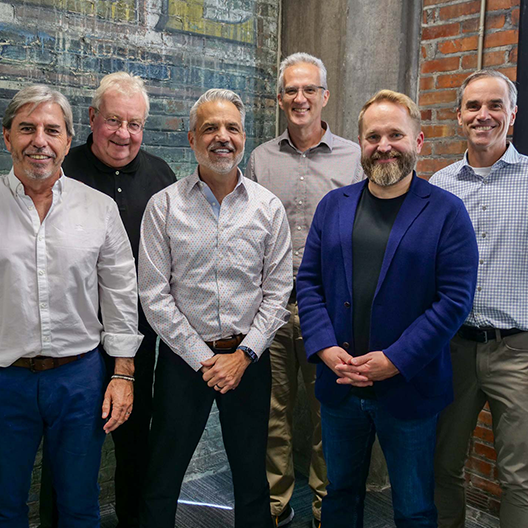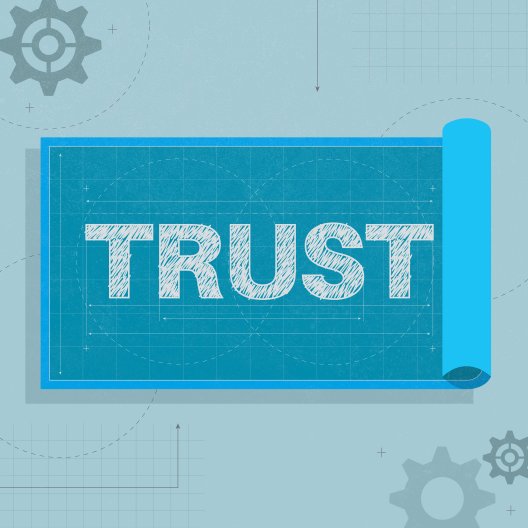
Because we work with some notable and important B2B brands, we’re fortunate to witness and be part of a lot of excellent B2B marketing. These programs are underpinned by different philosophies and approaches. Some clients are hyper-focused on lead generation and martech, while others emphasize brand development. Some are prolific content generators and thought leaders; others invest heavily in face-to-face interactions at events.
Being in the center of all these super-smart marketers and different approaches means we often are asked questions about what works best in B2B or what advice we would give to a marketer based on what we’re seeing. In this blog, I’ve taken a shot at summarizing the most common questions I hear and the type of advice I often give.
Q: What is one thing successful B2B marketers all have in common?
A: If there’s one shared attribute, I’d say it’s that the best marketers understand the value of a strong brand foundation, i.e., a unifying message focused on the “why” of their business that connects with customers who believe similarly. Simon Sinek captured this concept beautifully in his Golden Circle TED Talk where he compelled businesses to “Start with why.” Messaging at the product level — features, functions and benefits — won’t take you very far, if anywhere. In most industrial and technical markets, products are viewed at near parity. Meaningful differentiation occurs when decision makers see higher-order, personal value in the brands they consider. The brands that understand this are winning.
Q: Is content marketing still prevalent, and does it work?
A: The short answers are “yes” and “yes”. Content marketing is alive and well. We see significant portions of budgets still being allocated to the development and distribution of helpful, educational, informative content. I see two key factors that help ensure content marketing programs deliver results. The first is “platform.” I feel the folks who do content marketing the best do so with intent. They identify important issues in their served markets and develop an authentic, compelling point of view that relates. All their efforts focus on these issues, which helps them develop a notable market position. They have a platform. Secondly, more businesses are embracing paid channels for content dissemination. While organic exposure is the desired pinnacle for B2B content marketing efforts, competition for visibility is intense. We’re seeing clients achieve great results implementing strategic paid programs using LinkedIn and online trade media and industry associations.
Q: Is it possible to measure a true marketing ROI?
A: Yes, but possible does not mean easy. Measuring marketing attribution and proving direct connections between programs and revenue remain a bridge too far for many industrial and technology companies to cross. The reasons are many, but I’d sum them up as follows. First, long sales cycles and multi-person buying committees make characterizing and quantifying the marketing impact on a complex B2B sale very difficult. Old news, but still true. Second, the technical and process challenges of tracking leads to revenue (from tactic to lead capture to qualification to marketing automation nurturing to CRM to sales opportunity) continue to hinder marketers. Integration between systems does not always happen as advertised. Even qualified integrators find it difficult or impossible to connect systems OWNED BY THE SAME MARTECH COMPANY. It’s not unsolvable, but the process of accurately measuring marketing ROI is a large investment many companies haven’t been willing to make. Time and money — if you have them, there is hope. If you don’t…
Q: What is the biggest B2B marketing pitfall we should avoid?
A: Settling for sameness. It’s been more than a decade since Simon Hayward of Gartner proclaimed, “Most products are now good enough to serve the majority of users most of the time.” Hayward was telling B2B marketers to stop messaging at the table stakes level; to stop settling for uninspired approaches and language that the big players in your space have made so prevalent. Aspire to stand out versus blending in. In recent years, perhaps no industry segment has been more guilty of “settling” than Industry 4.0, i.e., IIoT. Nearly every manufacturer is pivoting some or all their business on software and service models that incorporate IIoT. By doing so, they hope to help customers “drive unconventional growth by optimizing assets through digital transformation and unlocking unprecedented efficiencies.” Barf bag, please. Messaging in the IIoT space lacks imagination, and that’s largely because the consultants and technology companies all decided to use the same lexicon of platitudes, such as:
- Transform
- Disruption
- Efficiency
- Digital
- Insight
- Unconventional
- Unprecedented
- Operational
- Opportunities
- Informed
- Real-time
- Outcomes
- Decision-making
Messaging shouldn’t be a game of Mad Libs, but in many cases, it is. Try your absolute hardest to find the story you can truly own. Just because Accenture, Deloitte and IBM say something a certain way doesn’t mean you have to follow suit.
Q: What’s one piece of unsolicited advice you’ve offered to customers recently?
A: Have courage. The most attention-grabbing, results-delivering programs we see happen when a client has the courage to do something different. They believe in big ideas that break conventional, internal molds for how things are usually done: advertising campaigns that don’t include the product; messaging that uses plain, bold and accessible word choices; or a design or color palette that bends brand compliance rules, but is ideal for the purposes of a campaign or program. I cut my teeth in a 1990s era of industrial marketing dominated by rule-following and compliance, which too often led to safe, unimaginative and unnoticed work. I’m thrilled to work today in a company and with clients who are willing to get uncomfortable and bend the rules when it makes sense to do so. It’s important to respect the need for consistency, but when you find those rules are too constraining to achieve your goals, you should be confident and courageous enough to make the case for doing something different.
Got more questions? I’d love to hear from you.




